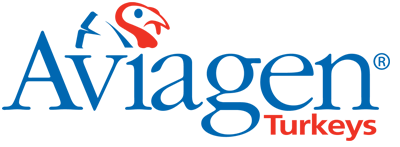Principles of Farm Biosecurity
Definition
- Biosecurity is a set of management practices which are designed in conjunction with the farm infrastructure to prevent the introduction of infectious organisms (pathogens) onto a site.
- If a pathogen is present on a site, then the biosecurity should prevent its spread to other parts of the system.
- Biosecurity needs to be considered for the production system as a whole because each part is closely linked to the next.
Objective
The objective of farm biosecurity is to exclude potential pathogens from the farm and thereby help maintain the health, welfare and productivity of the stock.
The potential risk of a pathogen occurring on a farm can be determined by carrying out a risk assessment:
Risk = (Likelihood of Hazard occurring) x (Severity)
Where the Hazard is the pathogen or disease and the Severity is the potential consequences of the hazard occurring (e.g. mortality, flock depletion, reduced production etc).
Biosecurity procedures are designed to reduce the likelihood of the hazard occurring and thereby reduce the risk. The severity can be reduced for some diseases through vaccination or treatment to reduce the consequences of the disease should it occur.
Procedures
The biosecurity standards to be implemented need to be considered when a new farm is being designed. It is generally more difficult to retro-fit an existing farm for good biosecurity.
The level of biosecurity required for a particular farm type depends on a number of factors:
- Generation of turkeys present on site
- Biosecurity requirements for grandparents > parents > meat turkeys.
- Export requirements.
- Local and Exotic disease risks.
- Zoonotic disease risks.
The level of biosecurity required can be determined by a cost-benefit analysis. The potential financial losses due to a turkey grandparent or parent flock becoming infected with some pathogens are significantly more than those of a commercial turkey farm becoming infected. In addition the potential for vertical transmission of certain diseases from breeders is a major factor that needs to be considered. This needs to be weighed against the initial cost of putting the biosecurity infrastructure in place and the continued ongoing costs of operating a high standard of biosecurity.
When formulating the biosecurity standards and procedures for a farm, all inputs to and outputs from the farm need to be taken into consideration (fig.1). The manner and degree to which the standards below are applied will be determined by the cost-benefit analysis.
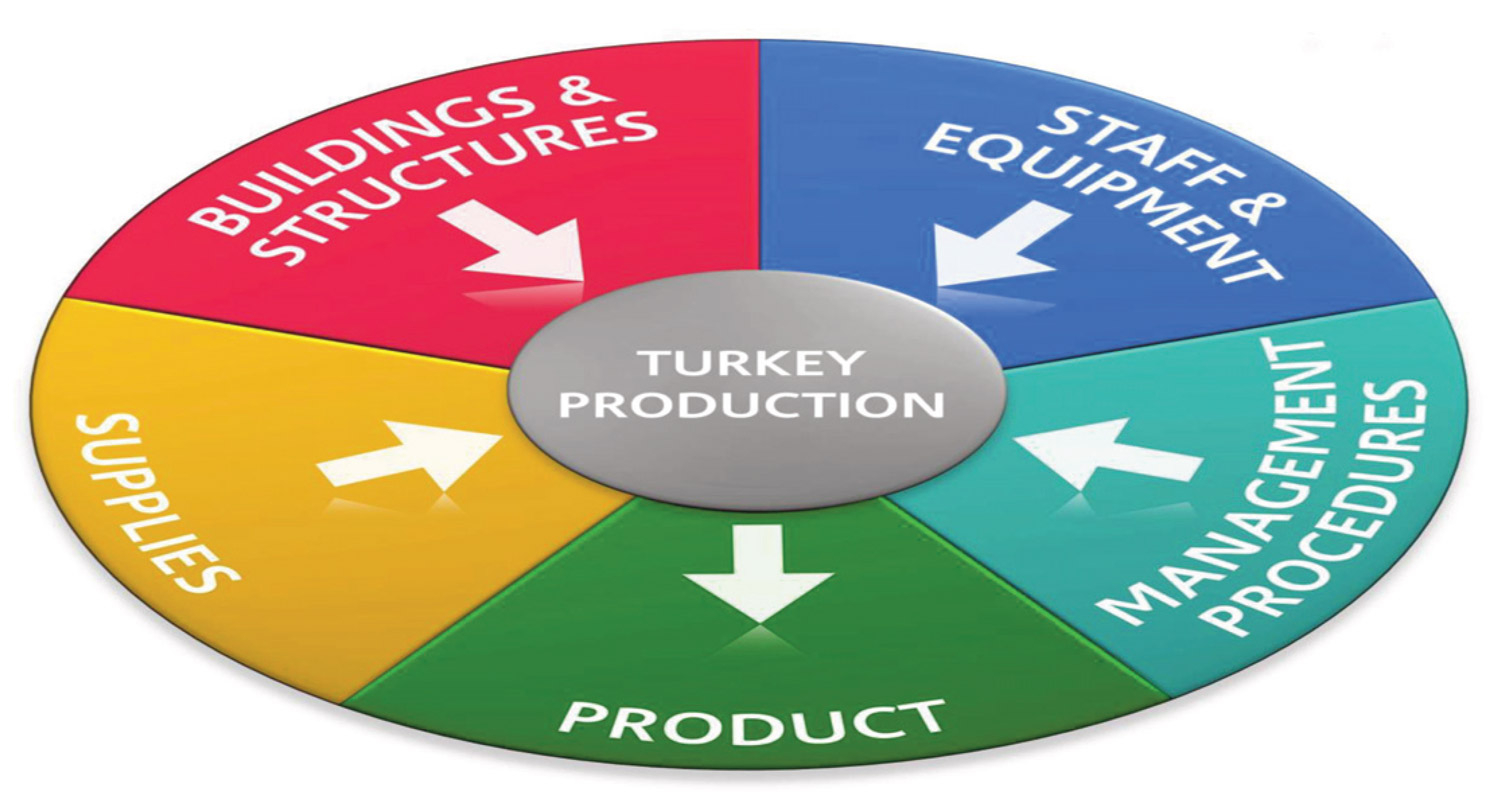 Figure 1. Inputs and outputs from a typical farm
Figure 1. Inputs and outputs from a typical farm
For biosecurity to be effective the procedures need to be complied with by all personnel involved at all times. To ensure that this happens it is useful to ensure that the infrastructure and procedures in place are designed to make biosecurity:
- Easy or comfortable to comply with – e.g. shower-in site needs warm comfortable shower facilities.
- Unavoidable or unnecessary – i.e. designed into the infrastructure or system. E.g. corridor linked buildings significantly reduces the need to carry out entry procedures from the external environment.
- Readily detectable if not complied with – e.g. different coloured boots for different areas.
The biosecurity standards to be put in place can include the following:
Location
- Located in an area of low poultry density.
- Isolated from other livestock.
- Away from transport routes frequently used to transport poultry.
- Away from concentrations of wild birds and water fowl.
- Away from other facilities/businesses that could present a biosecurity risk.
Farm Design
- Designed to facilitate biosecurity e.g. single entry point with shower block (fig. 2).
- Prevent contact with wild birds and other wildlife including vermin.
- Reduced need for vehicle access to the bio-secure area e.g. locate feed bins near perimeter fence (fig. 3).
- Reduce need for repeated entry into buildings from the external environment e.g. linked buildings (fig. 4).
- Effective drainage to prevent flooding or other water ingress.
- Allow effective cleaning and disinfection – choice of materials important (fig. 5).
- Minimise vegetation, including trees in areas surrounding buildings.
- Bio-secure dead bird disposal e.g., incinerator or freezer.
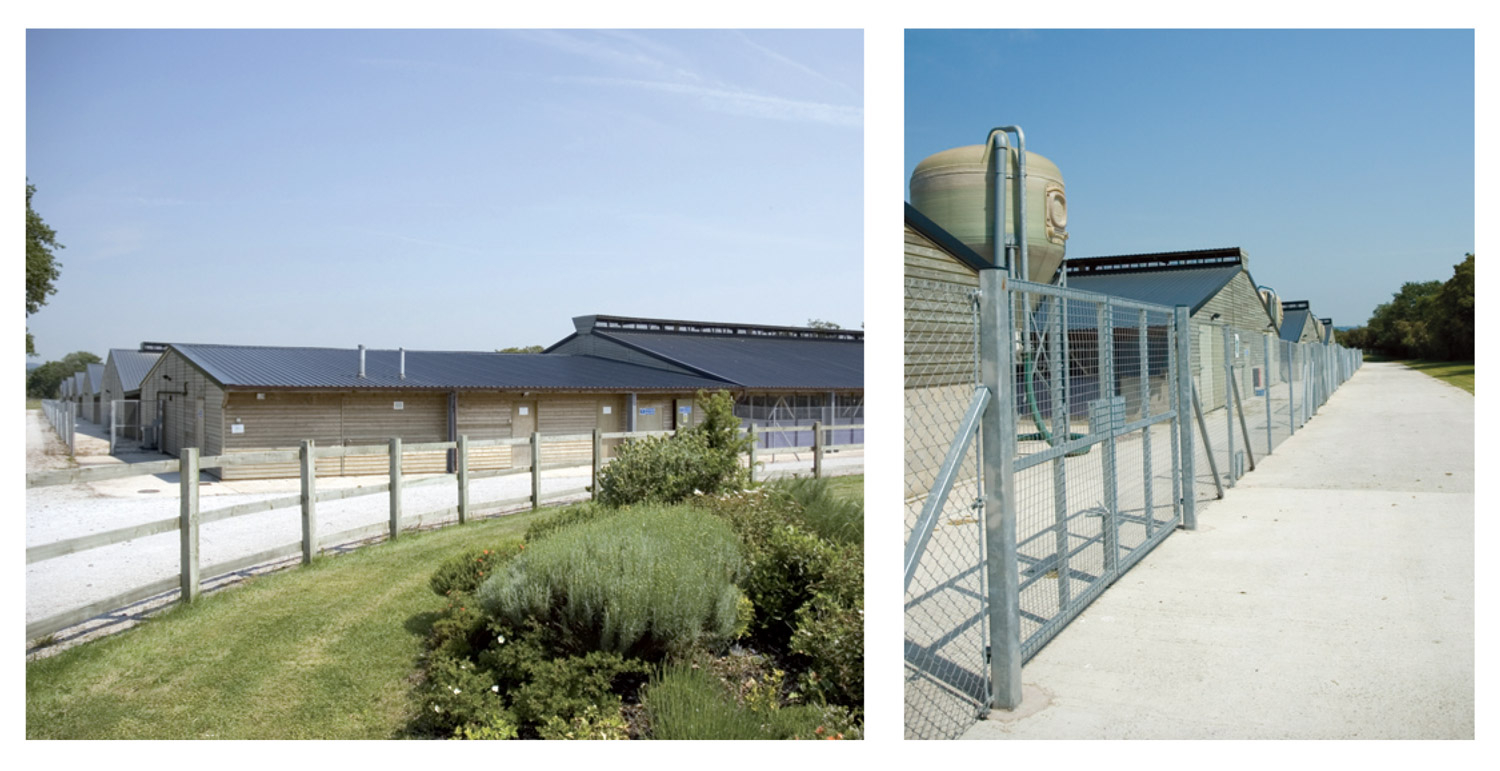 Figures 2 & 3. A new farm with perimeter fence and one entrance through a shower block. The feed bins are located close to the gate in the perimeter fence for effective ease of access for vehicles.
Figures 2 & 3. A new farm with perimeter fence and one entrance through a shower block. The feed bins are located close to the gate in the perimeter fence for effective ease of access for vehicles.
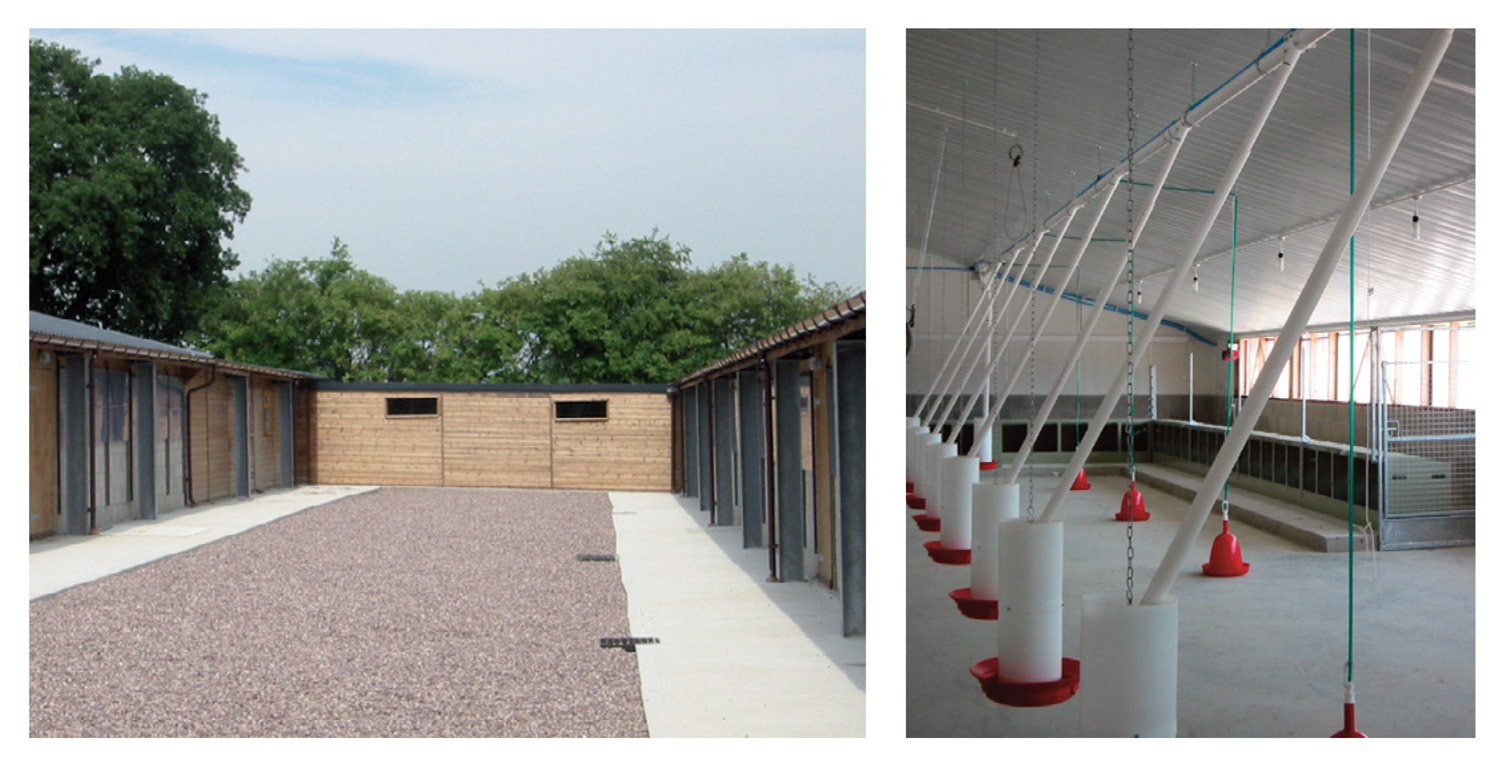
Figures 4 & 5. Enclosed passages between houses on a farm. Equipment, floors & walls are easy to clean and disinfect and in good repair.
Staff and Equipment
- Farm should be self-sufficient in moveable equipment to prevent the need for transfer between sites.
- All equipment must be capable of being cleaned and disinfected.
- Farm should be self-sufficient in suitably trained personnel who have no contact with other poultry, livestock or wild birds.
- Personnel must not enter the site if they suspect they may have a potentially zoonotic disease.
Management Procedures
- The buildings, equipment and environment should be well maintained.
- The stocking policy for the farm should be predetermined to allow adequate down time for maintenance and cleaning and disinfection – all-in/all-out system.
- The buildings, equipment and other infrastructure must be of a suitable hygienic status before a farm is restocked.
- All waste from the site must be disposed of in a suitable manner.
- Suitable biosecurity measures to prevent pathogens entering via personnel, visitors or equipment must be in place at all times.
- The company must have in place a Biosecurity Policy which lays down rules governing the movement of personnel, visitors, and all traffic onto and between sites.
- Predetermined procedures which limit the potential for disease spread must be followed in the event of disease being suspected or confirmed.
- Only essential vehicles should enter the biosecurity perimeter and these must undergo appropriate cleaning and disinfection.
- Effective vermin and pest control procedures must be in place.
Supplies
- The farm should be restocked with birds of a suitable health status.
- Feed should be of a pre-agreed biosecurity standard and this status maintained during delivery to and storage on site.
- Only clean potable water should be used.
- Bedding material should be of a suitable pathogen-free status. It should be stored and brought into the barns in a biosecure manner.
- The source and handling of all other supplies must be considered with regard to their biosecurity status.
Summary
The level of biosecurity adopted will be determined by the factors stated above and will need to be company and site specific. The level of biosecurity can vary significantly. For example, personnel can be required to simply change boots and wear protective clothing on entry to the farm right through to having a walk-through shower in/shower out system where no personal clothing is taken onto the site and all clothing /footwear is supplied on the farm. Biosecurity infrastructure and policies need to be in place, understood, and strictly followed by all personnel.
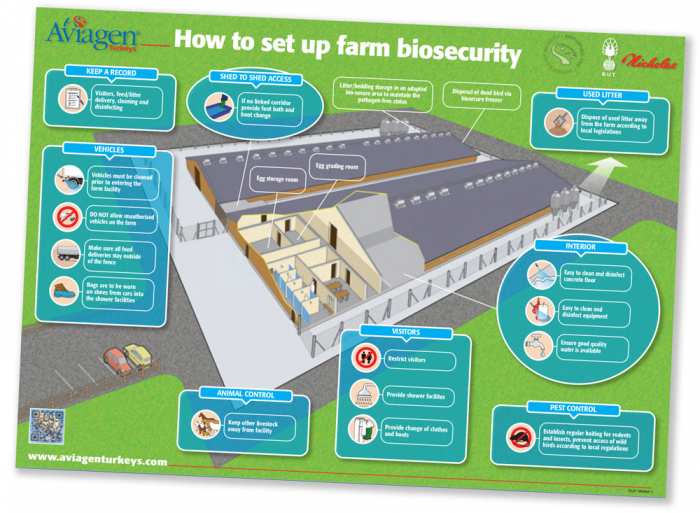
You can find these documents and more by clicking here >
 Figure 1. Inputs and outputs from a typical farm
Figure 1. Inputs and outputs from a typical farm Figures 2 & 3. A new farm with perimeter fence and one entrance through a shower block. The feed bins are located close to the gate in the perimeter fence for effective ease of access for vehicles.
Figures 2 & 3. A new farm with perimeter fence and one entrance through a shower block. The feed bins are located close to the gate in the perimeter fence for effective ease of access for vehicles.

